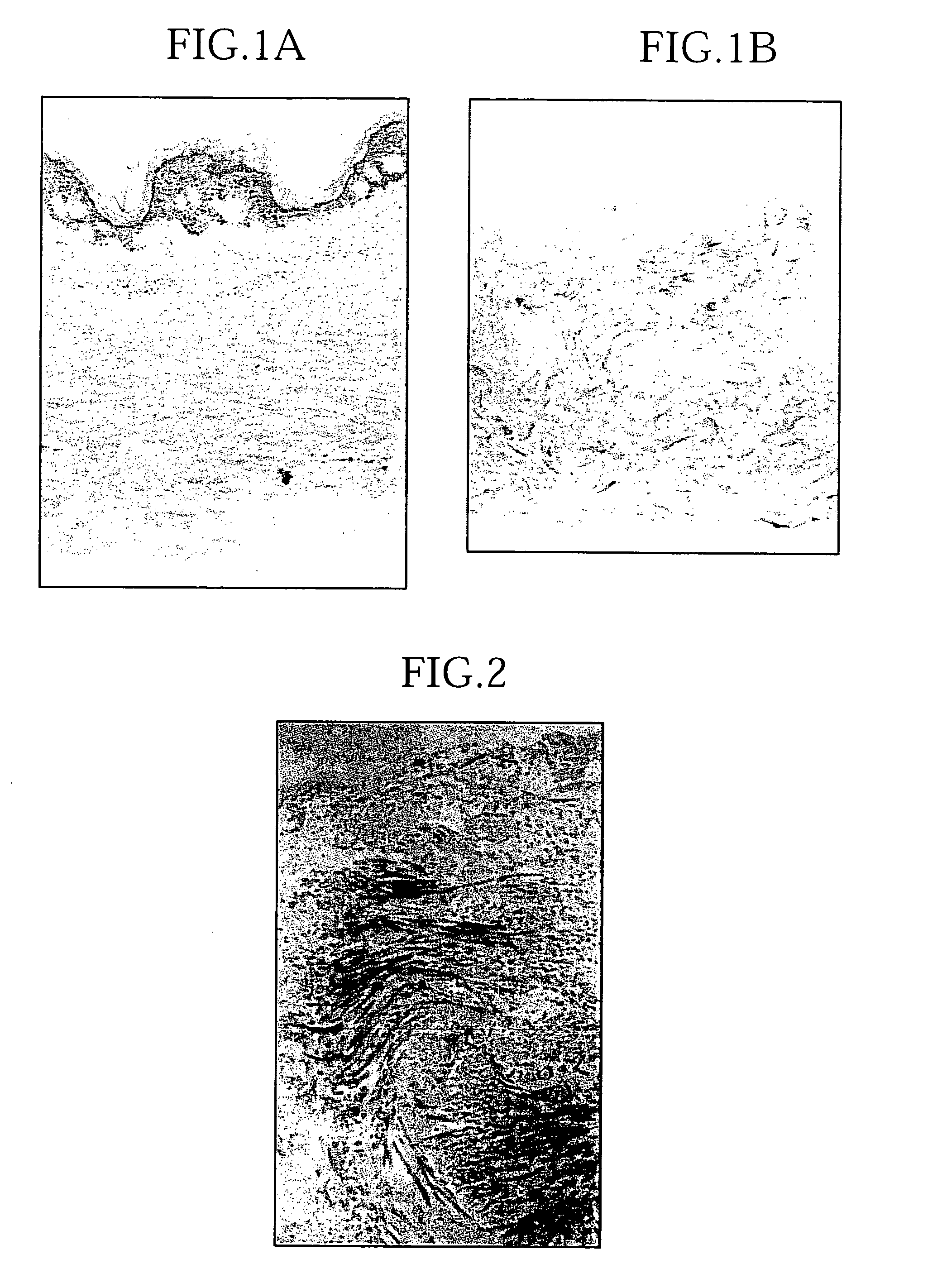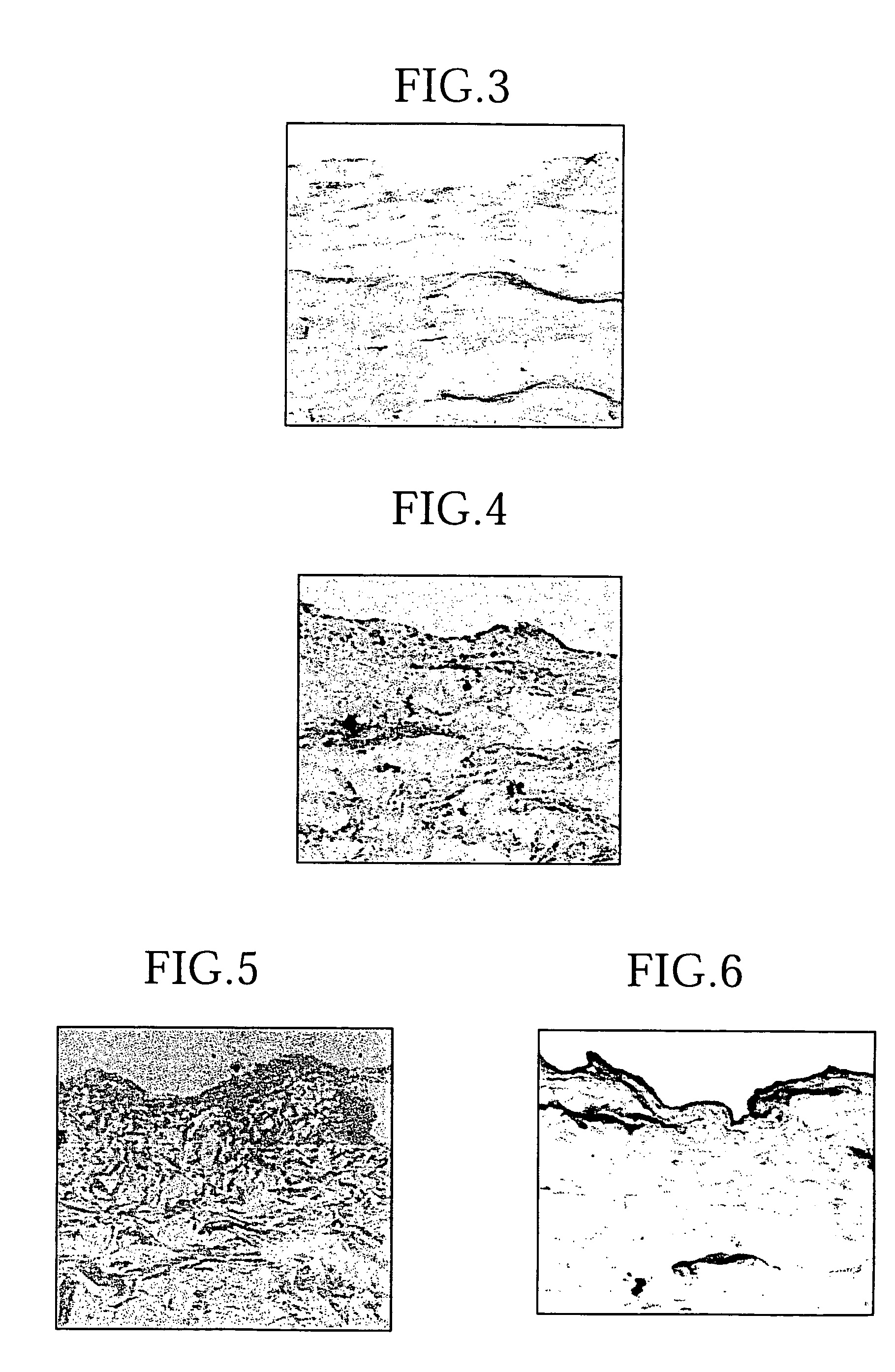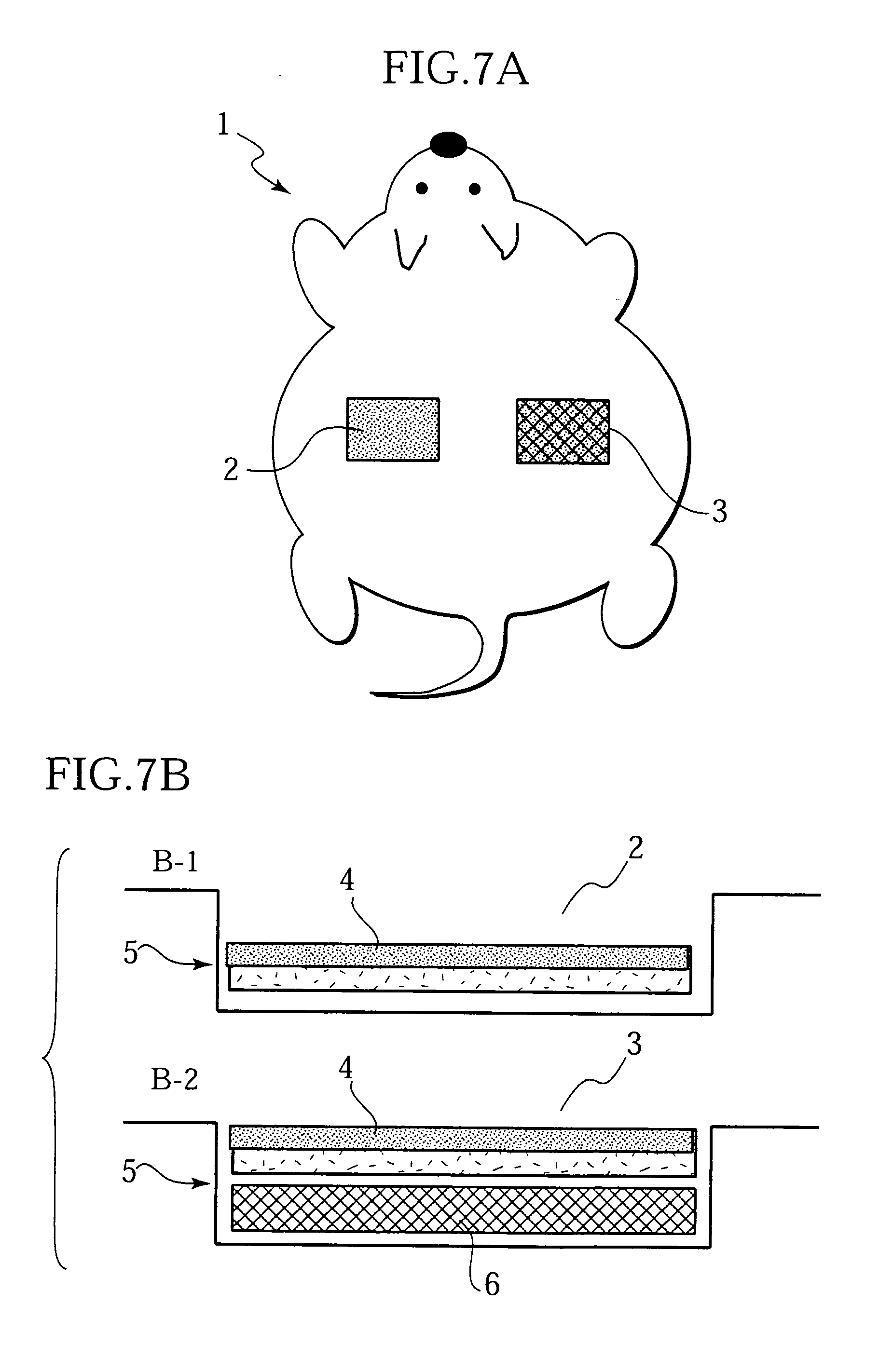Skin decellularization method, acellular dermal matrix and production method therefore employing said decellularization method, and composite cultured skin employing said matrix
- Summary
- Abstract
- Description
- Claims
- Application Information
AI Technical Summary
Benefits of technology
Problems solved by technology
Method used
Image
Examples
example 1
Preparation of Acellular Dermal Matrix
Treatment 1: Separation into Epidermis and Dermis
[0057] Surplus skin (split-thickness skin: average thickness of about 0.38 mm: 0.015 inch) not needed during surgery or after harvesting allogeneic skin was immersed in a mixed solution containing 0.25 wt % trypsin and 1 mM EDTA and incubated at 37° C. for 3 hours. This treatment easily separated dermis from epidermis.
Treatment 2: Removal of Cellular Components Within Dermis
[0058] A dermis portion obtained in Treatment 1 was immersed in a mixed solution containing 0.125 wt % trypsin, 1 mM EDTA, and 0.25 wt % Triton X-100 (product name) and shaken at 37° C. for 3 to 4 hours. This treatment removed all of the cellular components (including cells of cutaneous appendages, vascular cells, fibroblast cells, and nervous system cells) within the dermis, and the dermis was composed only of a dermal matrix containing collagen as the main constituent.
Treatment 3: Washing, Testing, and Storage of Acel...
example 2
Histological Properties of Acellular Dermal Matrix
[0060] The acellular dermal matrix prepared as above was completely acellular and retained a normal three-dimensional intradermal collagen structure (FIGS. 1a and 1b). Microscopic observation showed that there was very little damage to the intradermal collagen structure (FIG. 2). On the other hand, a section of the epidermis / dermis border corresponding to the basement membrane was not stained by PAS staining (FIG. 3), and expression of laminin and type IV collagen, which are components of the basement membrane, was attenuated (FIGS. 4, 5, and 6).
example 3
Comparative Study of the Acellular Dermal Matrix of the Present Invention and Acellular Dermal Matrix from Conventional Methods
[0061] In order to examine the characteristics and advantages of the production method for the acellular dermal matrix of the present invention, comparison thereof with decellularization methods reported in the art was carried out. As the conventional methods reported so far, there are the following methods. [0062] Method 1: a method in which Dispase, which is a protease, and Triton X-100, which is a detergent, are employed in turn and, that is, a method in which, when split-thickness skin is separated into epidermis and dermis, a treatment with Dispase is carried out, and when the separated dermis is subsequently decellularized, a treatment with Triton X-100 alone is carried out (Y. Takami et al, Burns, 1996, Vol. 22, No. 3, p. 182-190). [0063] Method 2: a method involving treatment with a 1 M sodium chloride solution and an SDS solution (S. A. Livesey et ...
PUM
 Login to View More
Login to View More Abstract
Description
Claims
Application Information
 Login to View More
Login to View More - R&D
- Intellectual Property
- Life Sciences
- Materials
- Tech Scout
- Unparalleled Data Quality
- Higher Quality Content
- 60% Fewer Hallucinations
Browse by: Latest US Patents, China's latest patents, Technical Efficacy Thesaurus, Application Domain, Technology Topic, Popular Technical Reports.
© 2025 PatSnap. All rights reserved.Legal|Privacy policy|Modern Slavery Act Transparency Statement|Sitemap|About US| Contact US: help@patsnap.com



